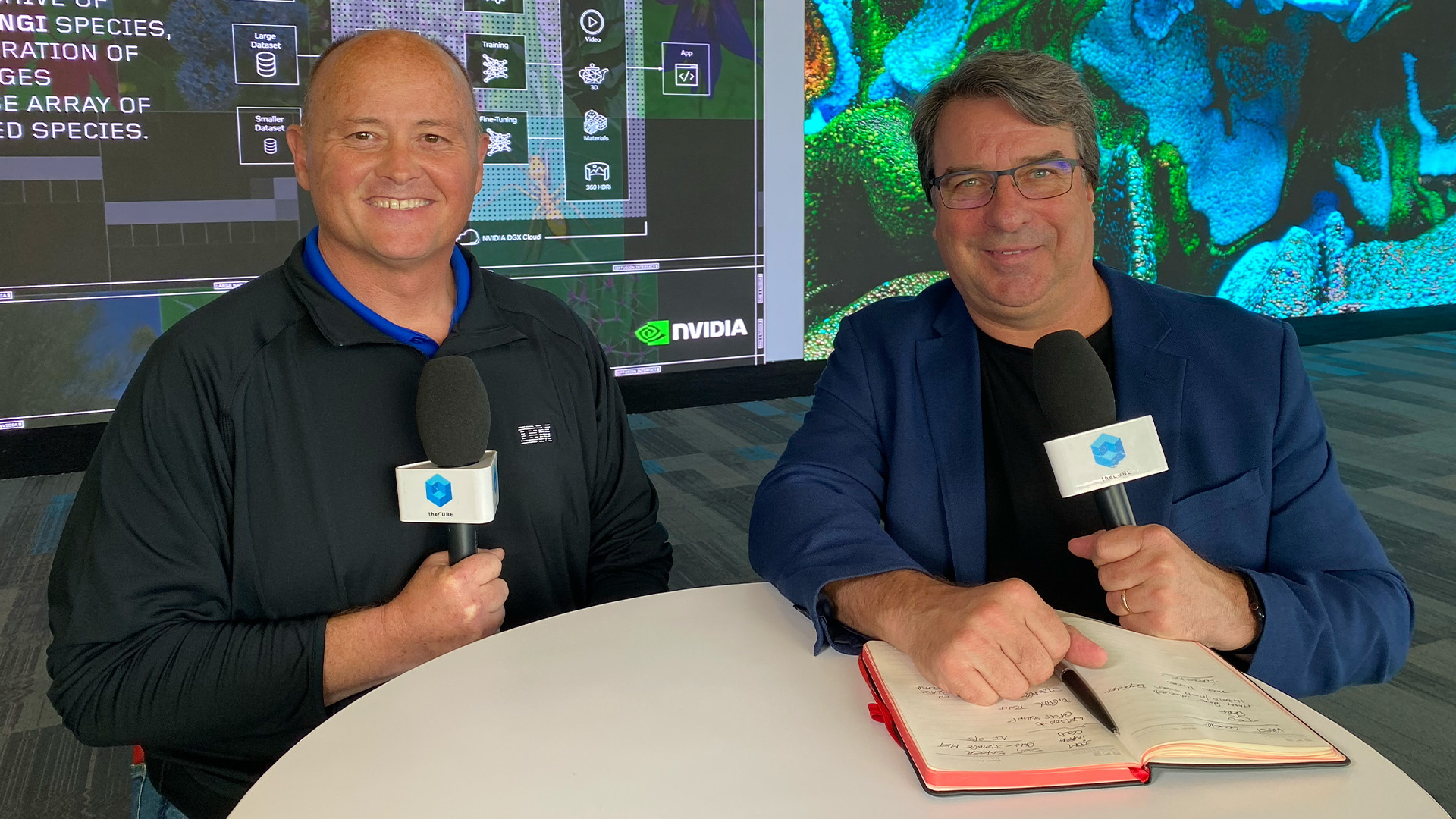 AI
AI
 AI
AI
 AI
AI
Since artificial intelligence is both compute intensive and capacity sensitive, it’s crucial to consider the overarching importance of integrating AI with storage solutions.
Considering the need to align storage clusters with the speed and performance of compute and memory clusters in the AI domain, IBM Corp. has become a key player through offerings such as watsonx, which provide tailored AI solutions, according to Scott Baker (pictured, left), chief marketing officer and vice president of the IBM Hybrid Cloud portfolio and product marketing.
“Whenever we think about AI, it’s about how quickly can I get to delivering value, not about how long does it take me to get to day two operations about connecting the different parts of the infrastructure together,” he said. “I think the storage itself has to be integrated or has to have AI integrated into it so that it can move and work as efficiently as the models it’s responsible for supporting. To that end, one of the things that we’ve done is we’ve really taken full advantage of the watsonx product line.”
Baker spoke with theCUBE’s executive analyst John Furrier (right) at the Nvidia GTC event, during an exclusive broadcast on theCUBE, SiliconANGLE Media’s livestreaming studio. They discussed why AI-integrated storage is needed as new tech continues to takes the world by storm, as well as how IBM fits into the picture.
The ability to push data back and forth across the compute cluster requires heavy reliance on the networking and storage infrastructure for enhanced performance. As a result, self-optimization, interconnectivity and sustainability should be embedded in storage, Baker pointed out.
“Whatever solution you decide to put into place has to deliver on the performance requirements you’re looking for but at the same time meet those ESG goals that the organization has,” he said. “As we begin to think about the super clusters, it’s not so much about how big of the storage environment we can sort of create in a single offering. It’s how easily it is that we make it so that you can connect multiple storage environments together.”
Since systems are witnessing a whole new AI revolution, the game still boils down to storage, compute and networking. As a result, IBM’s partnership and Nvidia Corp. is meant to spur this integration based on IBM’s AI vision, according to Baker.
“IBM has had a really healthy Nvidia partnership for quite some time,” he said. “I use the reference GPUDirect. It’s something that we’ve integrated into our storage systems. We’ve also looked at delivering GPU as a service from an IBM Cloud perspective. That partnership that we’ve developed has cultivated into having reference architectures for different SuperPOD deployments. Whether you’re talking about maybe H100s as your basic compute structure or not, all of that connected to that Storage Scale System.”
Here’s the complete video interview, part of SiliconANGLE’s and theCUBE Research’s coverage of the Nvidia GTC event:
Support our mission to keep content open and free by engaging with theCUBE community. Join theCUBE’s Alumni Trust Network, where technology leaders connect, share intelligence and create opportunities.
Founded by tech visionaries John Furrier and Dave Vellante, SiliconANGLE Media has built a dynamic ecosystem of industry-leading digital media brands that reach 15+ million elite tech professionals. Our new proprietary theCUBE AI Video Cloud is breaking ground in audience interaction, leveraging theCUBEai.com neural network to help technology companies make data-driven decisions and stay at the forefront of industry conversations.